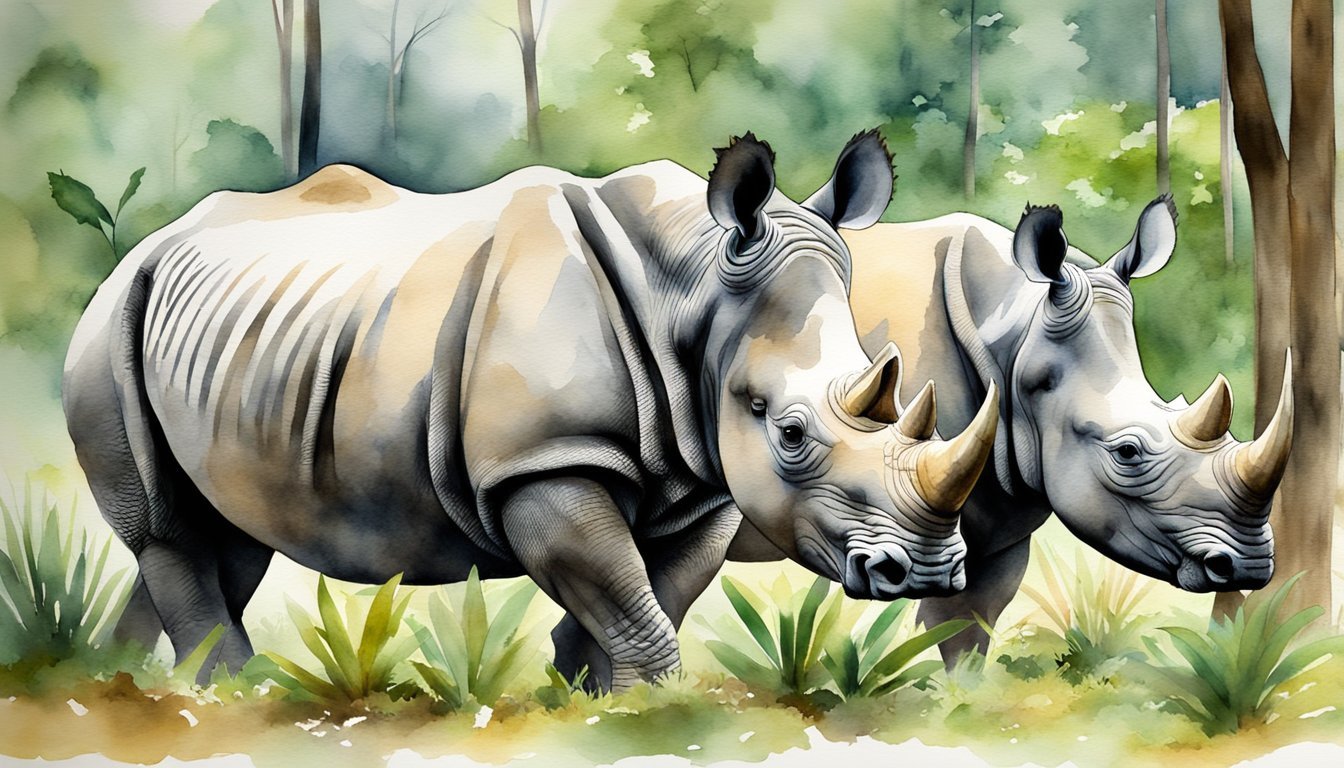Understanding the Plight of Javan Rhinos
Javan rhinos are among the most critically endangered species on the planet, with the fight for their survival hinging on tackling severe threats to their existence and conservation of their rapidly diminishing habitat.
Factors Leading to Endangerment
Several factors have converged to push the Javan rhino towards the brink of extinction. Chief among them is poaching for their single horn, highly valued in traditional medicine, despite no scientific evidence of its purported benefits. Habitat loss due to agricultural expansion and human development has further shrunk their living spaces. Additionally, low genetic diversity and inbreeding within the small population intensify the risk, as it reduces their ability to adapt to environmental changes and disease.
Natural Habitat and Current Range
The Javan rhinoceros (Rhinoceros sondaicus) relies heavily on dense tropical forest habitats. Today, they are only found in Ujung Kulon National Park in Indonesia, a testament to their drastically reduced range. This single population highlights the dire need to preserve and connect fragmented habitats to improve their chances of survival and to potentially increase population through a more diverse genetic pool.
Javan Rhino Biology and Behavior
Javan rhinos are known for their reclusive, solitary nature, preferring dense forest undergrowth and mud wallows. They have a length of up to 3.2 meters and can weigh as much as 2,300 kilograms. Their biology and behavior are unique, with a preference for browsing vegetation rather than grazing. Unlike other Asian rhinos, they possess a single horn, smaller than those of their African relatives. The species plays a crucial role in its ecosystem by affecting the composition of the vegetation and creating paths used by other animals.
Conservation Efforts and Challenges

The survival of the Javan rhino is contingent on the implementation of rigorous conservation strategies and overcoming significant challenges within their habitat.
Current Conservation Strategies
The Javan rhino, one of the world’s most endangered mammals, finds its stronghold in Ujung Kulon National Park. Here, conservationists deploy robust strategies such as habitat management which involves the removal of invasive plant species like the Arenga palm to foster bamboo growth, a favored forage plant for the rhinos. Additionally, conservation entities like the World Wildlife Fund (WWF) and the International Rhino Foundation collaborate with Indonesia’s Ministry of Environment and Forestry to bolster these efforts.
Monitoring and Research
To monitor the Javan rhino population effectively, wildlife conservationists employ camera traps, a non-invasive method that also captures the biodiversity within the rhinos’ habitat. In-depth research focuses on enhancing genetic diversity and understanding the rhino’s ecology, contributing to the species’ prospects for recovery. Collaboration with local authorities ensures that the latest findings guide the ongoing conservation strategy.
Future of the Javan Rhino
The future sustenance of the Javan rhino depends on safeguarding their current range and expanding the population beyond the limits of Ujung Kulon to mitigate risks such as disease or disasters. Engaging with conservation efforts, Indonesia is exploring new locations to establish secondary populations, which is crucial to increase the overall carrying capacity and to reinforce the global efforts towards wildlife conservation.

